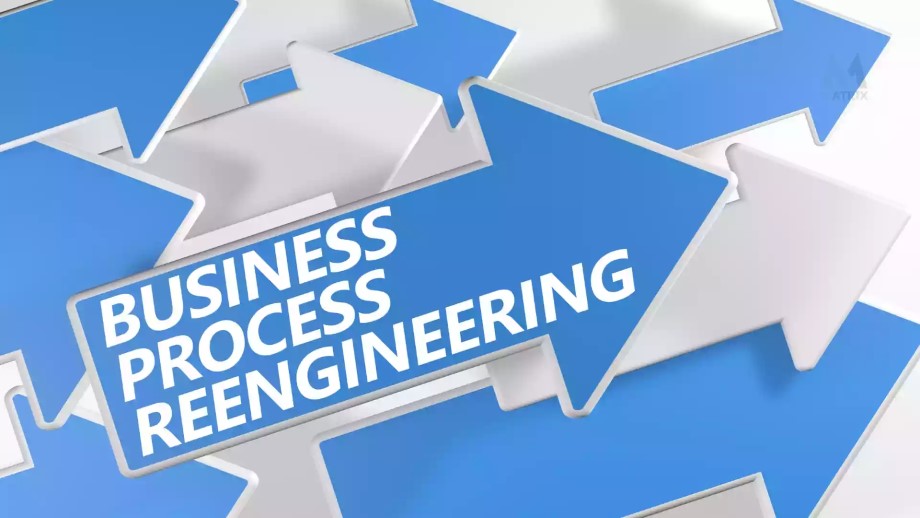Business Process Reengineering (BPR) is a strategic approach that allows organizations to achieve dramatic improvements in performance by fundamentally rethinking as well as redesigning their core processes. Originally developed in the 1990s, BPR has been widely adopted across industries as companies seek to enhance efficiency, reduce costs, and also improve customer satisfaction. Unlike incremental improvement methods, BPR involves a complete overhaul of existing processes, aiming for significant, rather than marginal, gains. This article explores the key aspects of BPR, including its steps, benefits, challenges, tools, and real-world case studies of successful implementations. Whether your organization is facing operational inefficiencies or preparing for significant growth, understanding BPR can provide valuable insights into how to drive meaningful, long-term change.
Introduction to Business Process Reengineering
Business Process Reengineering (BPR) is a strategic approach focused on fundamentally redesigning business processes to achieve significant improvements in performance. Originating in the early 1990s, BPR gained popularity as companies sought ways to dramatically enhance efficiency, reduce costs, and improve customer satisfaction. Unlike incremental improvement methods, BPR involves rethinking and reengineering core processes from the ground up, often leading to radical changes in how work is performed.
The concept of Business Process Reengineering is rooted in the idea that many existing processes are outdated or inefficient. By analyzing these processes and eliminating non-value-added activities, organizations can streamline operations as well as create more effective workflows. BPR is particularly important for businesses facing competitive pressures or needing to adapt quickly to market changes.
Moreover, BPR emphasizes the use of technology to enable process transformation. Advances in information systems and automation provide the tools needed to support new, more efficient processes. For organizations aiming to achieve significant performance improvements, BPR offers a powerful framework to rethink and also redesign how they operate, leading to more sustainable, long-term success.
Business Process Reengineering is a crucial methodology for organizations seeking to achieve substantial improvements in performance. By fundamentally rethinking and redesigning processes, companies can overcome inefficiencies, adapt to changing market conditions, and maintain a competitive edge.
The Steps Involved in Business Process Reengineering
Business Process Reengineering involves several key phases that guide organizations through the transformation of their processes. The first step is identifying processes to reengineer. This involves selecting critical processes that significantly impact performance or customer satisfaction. Typically, these are processes that are inefficient, outdated, or central to the organization’s strategic goals.
After identifying the target processes, the next phase is analyzing current processes. This step requires a detailed examination of how these processes currently operate, identifying inefficiencies, bottlenecks, and areas where value is not being added. Gathering data and mapping out each step of the process are crucial activities in this phase, providing a clear understanding of the existing workflow.
Once the analysis is complete, the focus shifts to designing new processes. This phase is where innovative thinking comes into play. The goal is to create streamlined processes that eliminate waste, reduce complexity, and improve overall efficiency. Technology often plays a significant role in this phase, enabling automation and more effective communication.
The final phase in Business Process Reengineering is implementing changes. This step involves putting the newly designed processes into action, which may require changes in organizational structure, new technology systems, and employee training. It is essential to monitor the implementation closely to ensure that the changes are delivering the expected improvements. Continuous feedback and adjustments may be necessary to optimize the new processes fully.
Business Process Reengineering follows a structured approach that includes identifying processes to reengineer, analyzing current workflows, designing improved processes, and implementing changes. These steps are essential for achieving the significant performance improvements that BPR aims to deliver.
Benefits and Challenges of Business Process Reengineering
Business Process Reengineering offers several significant benefits, making it an attractive strategy for organizations seeking substantial improvements. One of the primary advantages is cost reduction. By eliminating unnecessary steps and streamlining operations, BPR can lead to significant savings. These cost reductions often result from more efficient resource use, reduced labor costs, and minimized waste.
Another key benefit of Business Process Reengineering is improved efficiency. Reengineering processes often lead to faster workflows, better use of technology, and enhanced productivity. These efficiency gains enable organizations to respond more quickly to customer needs, improve service delivery, and increase overall competitiveness. Additionally, BPR can lead to higher customer satisfaction by creating processes that are more aligned with customer expectations and needs.
However, implementing Business Process Reengineering also presents several challenges. One of the most common challenges is resistance to change. Employees and managers may be hesitant to adopt new processes, especially if they involve significant changes to their daily routines. Overcoming this resistance requires strong leadership, clear communication, and effective change management strategies.
Moreover, BPR carries implementation risks. Redesigning and overhauling core processes can be complex and disruptive if not carefully managed. There is a risk that the new processes may not deliver the expected benefits or that the organization may struggle to adapt to the changes. To mitigate these risks, thorough planning, pilot testing, and ongoing monitoring are crucial.
Business Process Reengineering offers substantial benefits, including cost reduction and efficiency gains, but it also comes with challenges like resistance to change and implementation risks. By carefully managing these challenges, organizations can successfully leverage BPR to achieve significant improvements in performance and competitiveness.
Tools and Techniques Used in BPR
Business Process Reengineering relies on a variety of tools and techniques to ensure successful outcomes. One of the most fundamental tools is process mapping. Process mapping involves creating a visual representation of current workflows, allowing teams to see each step in a process clearly. This tool helps identify inefficiencies, redundancies, and areas for improvement, serving as a crucial first step in the reengineering process.
Benchmarking is another essential technique in Business Process Reengineering. It involves comparing an organization’s processes, performance metrics, and practices against industry standards or best practices. By identifying gaps between current performance and the best in the industry, benchmarking helps set realistic goals for improvement. It also provides valuable insights into how other organizations achieve superior results, guiding the design of more effective processes.
Gap analysis is closely related to benchmarking and is a critical technique in BPR. This methodology involves assessing the differences between the current state of a process and the desired future state. Gap analysis helps prioritize areas that require the most attention and resources, ensuring that the reengineering efforts focus on the most impactful changes. It also helps in setting measurable targets, making it easier to track progress and success.
Tools like process mapping, benchmarking, and gap analysis are integral to Business Process Reengineering. These methodologies provide a structured approach to analyzing, designing, and implementing process improvements, ensuring that organizations achieve significant gains in efficiency, quality, and performance. By utilizing these tools, businesses can systematically address inefficiencies and drive meaningful, long-term improvements.
Case Studies of Successful Business Process Reengineering
Real-world examples of successful Business Process Reengineering illustrate the significant impact BPR can have on organizational performance. One notable case is Ford Motor Company, which implemented BPR in the 1980s to address inefficiencies in its accounts payable process. By reengineering the process, Ford eliminated unnecessary steps and reduced the number of employees required to manage it. The result was a 75% reduction in headcount and a more streamlined, efficient operation, demonstrating the power of BPR to transform core business functions.
Another successful example is IBM, which undertook a massive BPR initiative in the 1990s to restructure its customer service and product development processes. Faced with declining market share and inefficiencies, IBM redesigned its processes to be more customer-focused and agile. The reengineering effort led to significant improvements in product development cycles and customer satisfaction, ultimately helping IBM regain its competitive edge in the technology industry.
Additionally, Taco Bell is a well-known case of successful Business Process Reengineering in the fast-food industry. By reengineering its food production and delivery processes, Taco Bell shifted from a traditional kitchen model to an assembly-line approach. This change not only reduced food preparation time and labor costs but also allowed the company to offer more value to customers. As a result, Taco Bell experienced substantial growth in market share and profitability.
Case studies from companies like Ford, IBM, and Taco Bell highlight the transformative potential of Business Process Reengineering. These examples demonstrate how BPR can lead to significant efficiency gains, cost reductions, and improved customer satisfaction. The lessons learned from these experiences underscore the importance of careful planning, strong leadership, and a clear focus on customer needs in successful BPR initiatives.
Conclusion
In conclusion, Business Process Reengineering (BPR) is a powerful methodology that can lead to significant improvements in efficiency, cost reduction, and customer satisfaction. By fundamentally redesigning core processes, organizations can overcome inefficiencies, adapt to changing market conditions, and maintain a competitive edge. While BPR offers substantial benefits, it also presents challenges, such as resistance to change and implementation risks. However, with the right tools, careful planning, and strong leadership, these challenges can be effectively managed. The successful case studies of companies like Ford, IBM, and Taco Bell illustrate the transformative impact of BPR and provide valuable insights for organizations looking to embark on their own reengineering journeys. By embracing BPR, businesses can achieve lasting improvements and drive long-term success.


